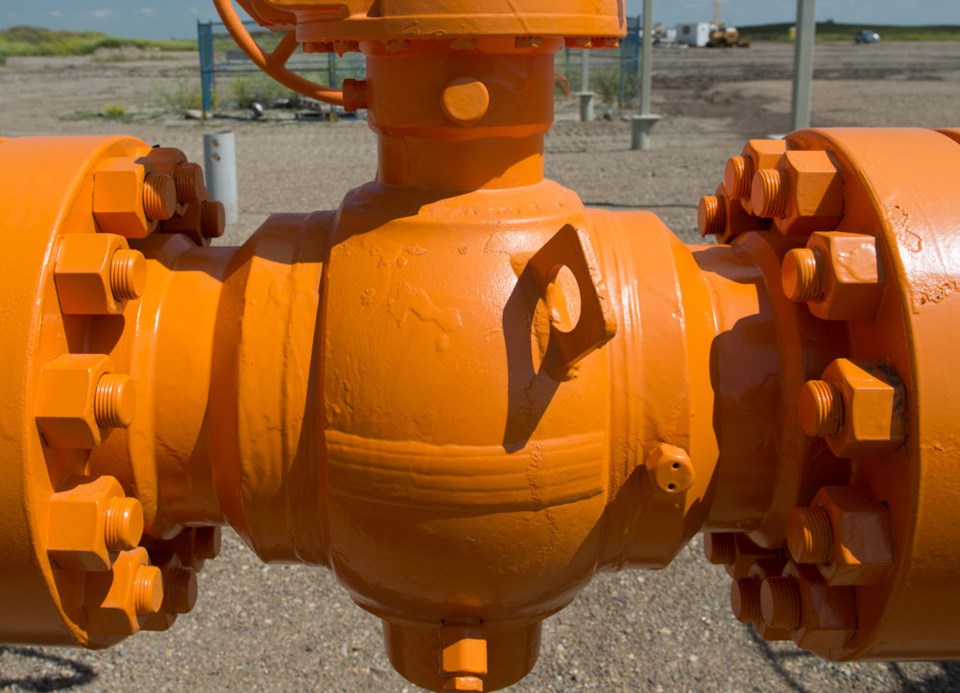The Petroleum Technology Research Centre began commissioning the injection well at the Aquistore site west of Boundary Dam Power Station on April 16.
The $45 million project, which seeks to demonstrate the viability of storing carbon dioxide kilometres below ground, has had equipment over the past two years monitoring base-level samples of the natural state of the rock layers below. Since the opening of the carbon capture facility at Boundary Dam Power Station in October 2014, the site and those who oversee the project have been waiting for this initial injection.
Ken From, PTRC CEO, noted the initial injection marks the beginning of the site’s commissioning. The project involves two wells, an injection well and a monitoring well, and teams will be injecting up to 1,000 tonnes of carbon dioxide per day into a porous rock layer 3.4 km below the surface, though that degree of work hasn’t begun yet.
“We are commissioning the well. When you commission the well, you put in a little bit. You wrap up things and make sure everything is working,” said From, who noted that includes making sure all equipment and safety protocols are active.
There is a lot of activity around the site at the moment, with researchers from universities that include University of Bristol and University of Strathclyde in the United Kingdom as well as University of Saskatchewan, University of Alberta, University of Ottawa and St. Francis Xavier University. Researchers are conducting a number of projects looking at micro and nano-seismic monitoring, groundwater monitoring and seismic modeling.
There are another dozen research partners and subcontractors overseeing various other sides of the project.
The majority of the CO2 from the new carbon capture facility at Boundary Dam is transported via pipeline to the Cenovus oilfield in Weyburn under a commercial agreement to supply CO2 to improve oil recovery. What Cenovus doesn’t buy will go to Aquistore, which has the potential to store close to a million tonnes of CO2 per year.
The commissioning process is expected to last into May before the project reaches a point of steady-state injection.
“They’re doing a variety of step tests,” said From. “What they’re doing is they’re putting (the CO2) in and seeing if all the equipment is measuring the pressure responses, and they’re just changing (the level of injection) to see that everything seems to be working. So far, so good.”
He added Aquistore is the world’s first storage project that is connected to a commercial power station. Because that power station is supplying power to the Saskatchewan populace, the Aquistore project must operate separately, so as not to cause any interruption to regular power supply.
He said there has been a good response from the equipment thus far. The pressure and temperature sensors have been acting as expected.
The Aquistore project uses a variety of technologies to see which ones will provide the best measurements and monitoring capabilities.
“The first six months (are the busiest), because that’s when we’ll be able to image the plumb of CO2 moving from the injection well out into the formation, and that is absolutely critical,” said From.
With a project designed to gather information, even at the commissioning stage, there is data to be gleaned. At the moment the information is providing more guidance for the operations of the facility than developing hard scientific data, but that, said From, is no less important.
“Once we start ramping up the values here, that will increase the magnitude of things,” he added. “As it continues we’ll just get into more and more of the monitoring that’s expected over time.”
The first six months are busiest, said From, and in that time the plume of CO2 will move throughout the basin. There are people on the ground now who are taking samples of the fluids following the first injections to see the concentrations of CO2 present.
“These samples have to be taken under reservoir conditions, so that’s 6,000 pounds and 115 degrees Centigrade, and they have to keep that sample in that condition until they can get it analyzed,” said From. “There’s a lot of work there.”
While those samples won’t be as critical to continue taking six months from now, other monitoring initiatives that are less labour intensive will increase.
“The project itself has a couple of facets to it, but it’s really about demonstrating to the world research community and the world regulatory community that, with respect to CO2 injection, we can monitor it, we can measure it (and) we can probably image where the CO2 is going,” said From.




